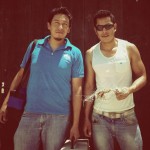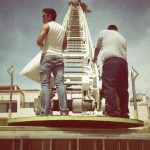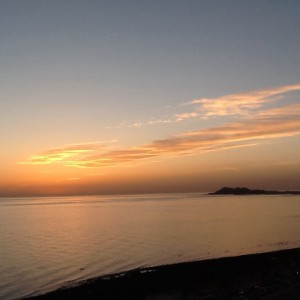More and more, people see Rocky Point as a place for eco-tourism. Whale watching, hiking the Piñacate Biosphere Reserve, kayaking the estuaries – all are ways to get in touch with the natural beauty found here. Lots of wildlife can be seen too. Studying and protecting this unique place where desert meets the sea is the job of CEDO.
The Center for the Study of Deserts and Oceans (CEDO) is in Las Conchas on a sandy hill above the beach. One day finds CEDO researchers in a remote camp working with fisherman, the next night, wading in a tide pool, leading a group of school kids as they discover life hiding under every rock. Recently they were called on to do something a little different.
“We have one nest in front of CEDO. Another one is about 500 meters to the northeast, near the coast too.” Hiram Peña Bonilla, CEDO Assistant Director, got a call from someone walking their dog. “The Osprey was caught in a fishing net, and couldn’t fly.” Ospreys are eagles that dive dramatically into the sea to catch breakfast. They can be seen flying overhead hauling huge fish in their talons, a look of open mouthed surprise on the fish.
All over town their nests are found someplace high, often a telephone poll. Ropes, sticks, and other sea debris are used by eagles to make their nests. This time, using fish net had turned the nest into a trap.
“The fire department helped us with a truck, and two of our guys went up to cut her loose” said Hiram. Ospreys are powerful birds, and they can hurt you. As they worked, the eagles mate flew above their heads, shrieking and trying to scare them off. With a lot of care the bird was secured, then the net was cut from her leg, allowing her to fly free once again. Hiram said “once they removed the net, they found it held an old foot from another Osprey, who presumably died this way.”
But today was a happy ending. The staff at CEDO did on a small scale what they do every day – protect a part of the local environment. Go to their website to find out more about CEDOs’ programs for sustainable fishing, protecting endangered species, as well as the educational tours open to the public. By Richard Scott
Photos by Hiram Peña






